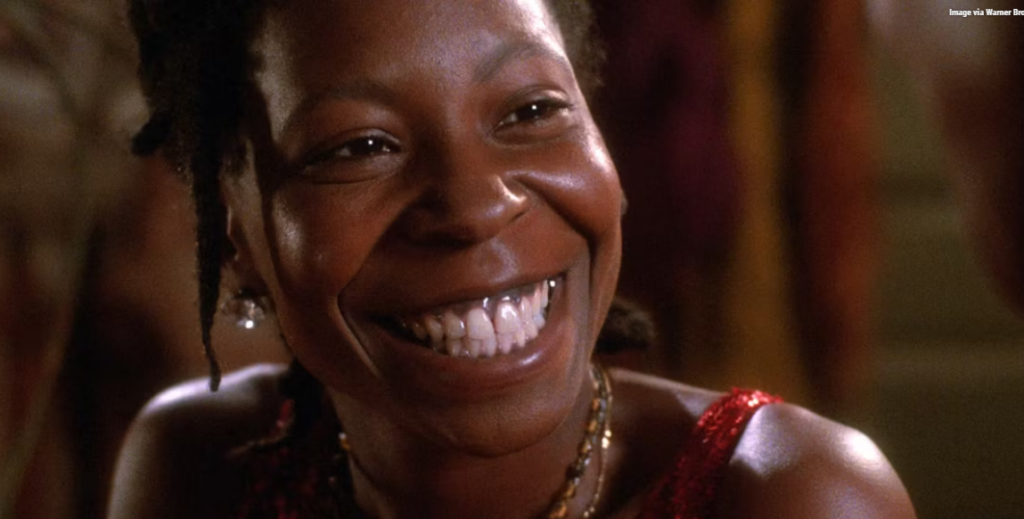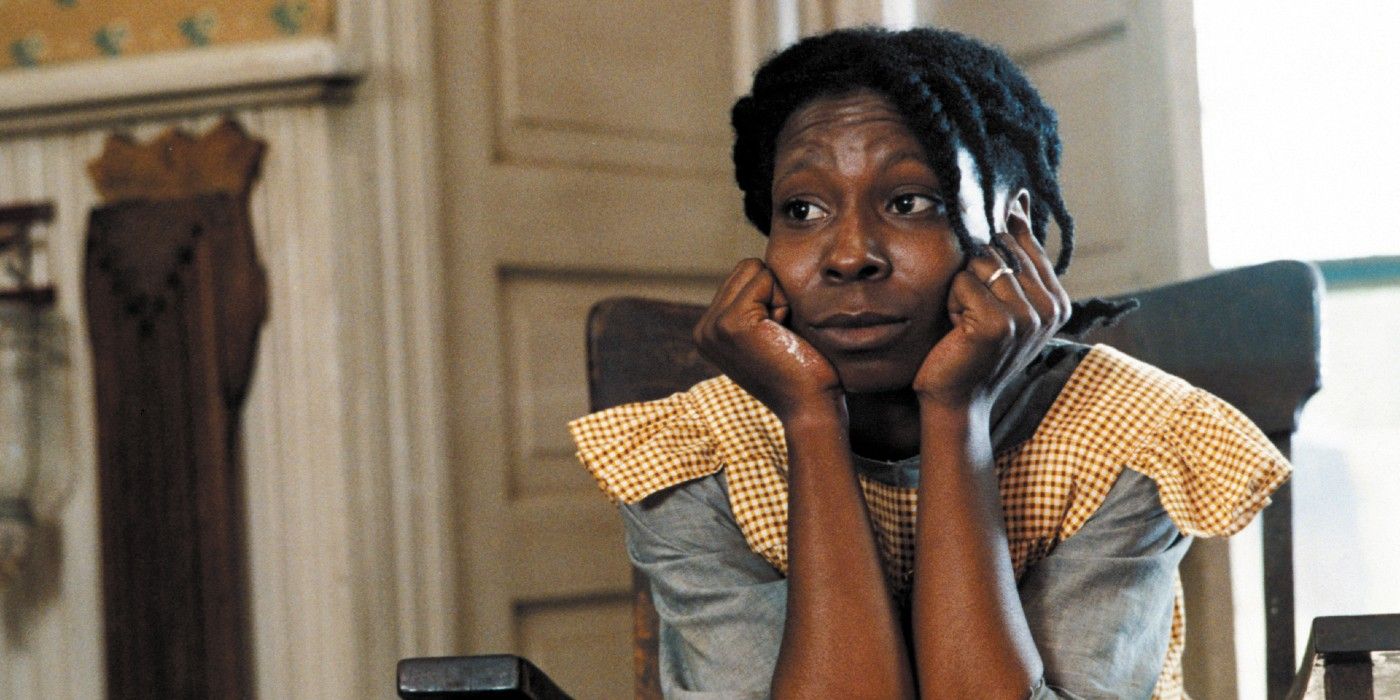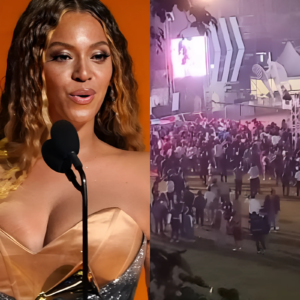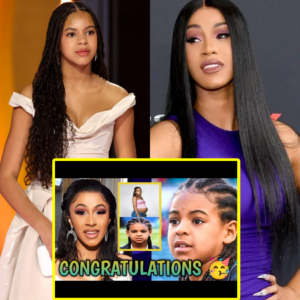The famous comedian emerged on the big screen with an indelible dramatic turn.

Coming off of a Pulitzer Prize for Fiction in 1983, expectations for Alice Walker‘s novel The Color Purple were understandably high. The epistolary novel was an essential text for feminist literature and the empowerment of African Americans. A big-screen adaptation of such an important book can alienate the source material, either due to misguided direction, an unwarranted Hollywood sheen on a weighty topic, or poor casting. The film, directed by Steven Spielberg in a drastic pivot from his previous blockbuster fare, was slightly compromised by the former two, as it is a viscerally potent, but imperfect adaptation. However, there is no denying the brilliance of the film’s casting, particularly of Whoopi Goldberg, an on-screen rookie who has remained a shining star in entertainment ever since the premiere of The Color Purple in 1985.
‘The Color Purple’ Was a Big Artistic Step for Steven Spielberg and Whoopi Goldberg
The film adaptation of Walker’s novel was realized by an assemblage of unlikely figures, despite the rich pool of talent that the film ultimately acquired. In the mid-1980s, Steven Spielberg was many things; the most commercially viable filmmaker, the most crowd-pleasing, and the most imaginative, but what he wasn’t was a “serious filmmaker.” Despite creating the cinematic blockbuster formula with Jaws, and making beloved films that still deeply resonate with audiences today, including Raiders of the Lost Ark and E.T. the Extra-Terrestrial, Spielberg vowed to mature his cinematic voice. When speaking to The New York Times in 1985, the director expressed apprehensive feelings about directing a “grown up” film, stating that he fears “the risk of being judged – and accused of not having the sensibility to do character studies.”
Walker, who was hesitant to sell the film rights to her novel, stipulated to Warner Bros that she would serve as a consultant on the film and demanded that at least half of the production team be African-American, female, or “people of the Third World.” Additionally, Walker was involved in the casting process and lobbied for lesser-known stars. This is how Whoopi Goldberg, who had never starred in a film before The Color Purple, landed the leading role of Celie Johnson, the young black woman growing up in Georgia in the 1900s amid abuse from her father, Albert (Danny Glover). Playing Sofia, the assertive wife of Albert’s son, Harpo (Willard E. Pugh), and the source of Celie’s envy towards an independent woman, was another first-time screen actor–you’ve probably heard of her, Oprah Winfrey. Along with the producing and scoring contributions from music icon Quincy Jones, The Color Purple assembled an extraordinary cast of legends of the period and the future.
Whoopi Goldberg Brings Humanity and Wonder to the Role of Celie in ‘The Color Purple’
Since the film was released nearly 40 years ago, The Color Purple has been reimagined as a musical on Broadway, with a film adaptation of the stage play releasing in theaters on Christmas 2023. After all these years, and the mass exposure the public has had to the star, Goldberg’s performance lingers the most powerfully out of anything. The role of Celie is cumbersome, as the story chronicles from her perspective. The viewer watches Celie grow in age, but she is never inspired to break free from the ruthless oversight of Albert, who is later revealed to not be her biological father after all. For a role packed with this much dramatic weight, it would be easy to get lost in the usual showcase of misery that these kinds of performances inspire, yet Goldberg maintains a palpable humanity–both in her moments of joy and dread.
The decision to cast an unknown and inexperienced actor to play Celie paid dividends, especially for Spielberg, as the character’s wistful imagination leans right into the director’s playbook. Celie’s yearning for a brighter future, according to Spielberg, “links to my previous movies in that it portrays an urgency to fulfill a dream.” He also told the Times, “Celie has an urgency to fulfill her own destiny, to discover the things that belong to herself.” The film was criticized by some for its stereotypical and degrading characterizations of African Americans, with Spielberg’s direction treating Celie as dimwitted. If this direction is too greatly emphasized, it’s only because Spielberg was determined to enforce the bewilderment that arises from her interactions with Sofia and the vivacious showgirl, Shug Avery (Margaret Avery). Goldberg exquisitely plays a timid and emotionally fractured woman, while presenting herself as an empty canvas for other characters and the audience to easily connect to.
In an interview with the American Film Institute, Goldberg describes her bewilderment on her first day of shooting The Color Purple. This scene, inside the jukejoint where Shug performs, shows Celie in a state of wonder and intimidation. “The look of wonderment that is on my face is real,” Goldberg said, “because I’m looking around, and Steven Spielberg is behind the camera.” At the time, Goldberg was a comedian who recently starred in a successful one-woman show on Broadway. Identifying her as the ideal candidate to play Celie was unconventional thinking, to say the least, but her chops on the stage boded well for her future career in Hollywood, which saw her winning an Academy Award for Best Supporting Actress in 1991 for Ghost following her nomination for Best Actress in The Color Purple. In a one-person show, all the attention is naturally on the lone performer. This helped Goldberg become magnetic with the camera, thus allowing her performance to be even more dazzling.
Whoopi Goldberg Grounds Spielberg’s Sentimentalism in ‘The Color Purple’

Despite the majestic craft and radiant visual language at the heart of The Color Purple, there are discernible imperfections in the film that only become more glaring through modern sensibilities. The bursts of light-hearted comedy and pure saccharine cause the film to lose sight of its solemn themes. These sporadic tonal shifts are seen as a slight towards Spielberg, who, as a white man, lacks the proper qualifications to direct a story about race and gender in America. Luckily, in these moments when Spielberg implicitly projects his fantastical worldview into the story, Goldberg’s performance is there to ground his sentimental vision. It is the minor gestures and actions that inspire Celie, such as the way Shug looks at her or receiving a letter from her lost sister, Nettie (Akosua Busia). Her breakthrough role is dialed into the “Spielberg wonder,” as she dreams of an escape from the domineering and violent behavior of Albert. She emphasizes the doubt and trepidation that Celie would possess coming from an oppressive environment.
In the Times interview, Spielberg recognized an “ugly duckling” quality to Celie in The Color Purple. “She’s called ugly by almost everyone when, in fact, she’s beautiful,” he remarked. This attribute perfectly suited Whoopi Goldberg to play Celie Johnson and be the lead in a Steven Spielberg film. While she is often seen retreating into the background and apprehensive of her surrounding environment, Celie still glowingly presents herself as a proud black woman. She conveys empowerment and hope through timidness, which requires an immaculate performance. Excellence in various fields of performing arts has been a mainstay throughout Goldberg’s career, and The Color Purple is where it all began.
The Color Purple is streaming on Max in the U.S.
News
Diddy LEAKS Disturbing FOOTAGE Of Beyonce & Jay Z | New EVIDENCE Revealed
The unfolding drama involving Diddy, Jay-Z, and Beyoncé has captivated audiences worldwide. Allegations of scandalous tapes, federal raids, and personal vendettas have dominated headlines, leaving fans shocked…
Tiffany Haddish SHADES Jennifer Hudson For Stealing Common From Her
Tiffany Haddish is making it abundantly clear that she’s not thrilled about comments on new relationship with Jennifer Hudson. She threw some major shade at Jennifer, hinting…
Breaking: Beyoncé’s “Cowboy Carter” Tour Sees Lackluster Ticket Sales, “Only 1500 So Far”
In a surprising twist of fate, Beyoncé’s highly anticipated “Cowboy Carter” tour has encountered a lackluster start, with only 1500 tickets sold for its opening night. This…
“Blue ivy is pregnant” Cardi b Exposed truth about the pregnancy on live TV show says CONGRATS
Welcome to CB Gossip, your go-to source for all the juiciest entertainment news. Don’t forget to hit that subscribe button and ring the bell for more updates….
Kevin Hart FREAKS OUT As 50 Cent LEAKS New Video Of Him & Diddy..
Absolutely, let’s delve deeper into these issues. It seems like there’s a plethora of speculation and rumors surrounding celebrities and their connections to Diddy’s controversial activities. From…
Mike Tyson EXPOSES Members Of Diddy’s S3X CULT..
Unveiling Diddy’s Troubles: A Deep Dive into Allegations and Controversies In recent years, Sean “Diddy” Combs, the rap mogul and entrepreneur, has found himself embroiled in a…
End of content
No more pages to load











